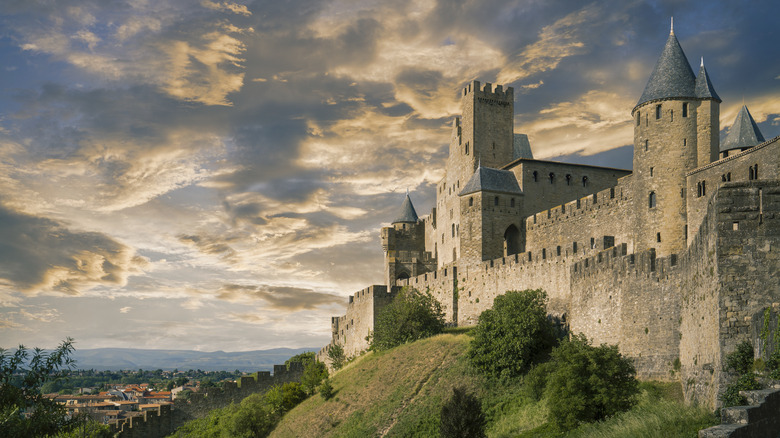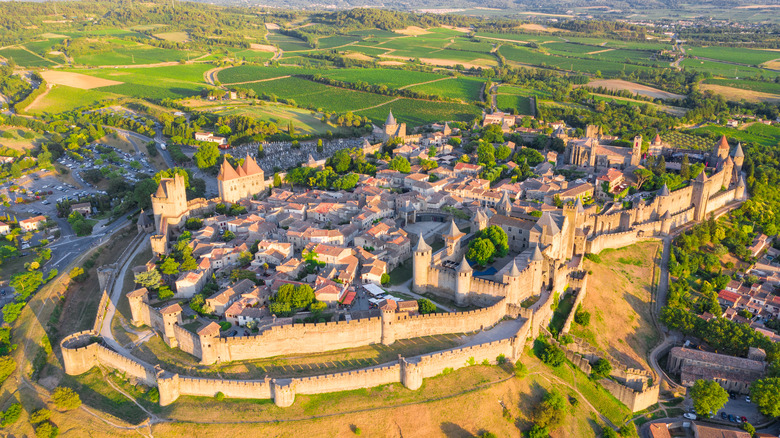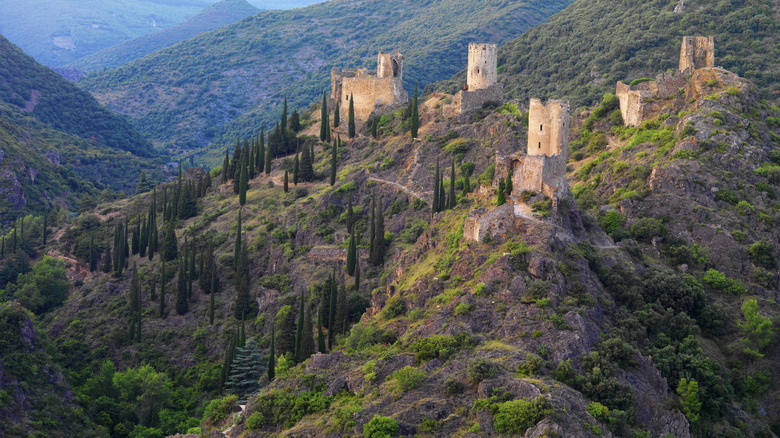This Little-Known Corner Of France Is More Authentic Than Its Crowded Neighbors, Per Rick Steves
For many, France is a dream destination filled with heavy hitters, but one underrated area might stand out. Known throughout the world as the City of Light, Paris typically sees some 40 million tourists a year, with many also exploring the nearby region. Outside the big city is the peaceful, relaxing French Riviera that boasts picturesque little-known beach towns. And for those seeking adventure, the French Alps that boast brilliant hikes and views. For Rick Steves, who always has great travel tips, tourists should escape France's crowded marquee cities to visit Languedoc.
Located in the country's southwest region, Languedoc is a more relaxed slice of France that emphasizes easy living. For Steves, Languedoc is a hidden gem worth a detour. On his blog, Steves describes Languedoc as France's hidden corner, calling it "an intoxicating part of the world." The travel veteran recalled how he first visited the low-key French region in his teen years, discussing how he continues to be moved by its geography and historical offerings all these years later.
Steves started his relationship with the area with the fortified town of Carcassonne. A UNESCO World heritage site, Carcassonne is a throwback to past medieval cities riddled with towers and turrets. Steves says Carcassonne, is "the perfect medieval city" for him, and it's hard to argue with him, as the area oozes culture and history with its cobblestone streets and daunting architectural design.
How to get to Languedoc?
Where does one start with Languedoc? The region once was its own provinceand has an extensive history worth investigating. Today, the region wears its history on its sleeve, making it a true blast from the past that's slightly out of the way. Getting to Languedoc isn't entirely difficult, especially if one wants to visit Carcassonne, one of Rick Steves' favorite regional destinations. From Paris, the city is typically an 8-hour drive away. However, though it's a rather scenic commute, taking you through Toulouse, one of the region's most famed destinations. If driving isn't an option, don't fret, you can travel there by rail. There are a number of trains (or busses) that can take you to Carcassonne or Toulouse.
Once you find yourself in Carcassonne, you'll have tons of things to do. The best way to enjoy the city is to simply stroll, getting a feel for the area and its vibrant culture. Walking through the old, fortified city will also inform the city's historical significance. Château Comtal, a medieval castle located in the city, is one location that can't be missed. The castle is atmospheric and worth checking out for the views it brings of the region. Be sure to also visit the Basilica of Saints Nazarius and Celsus, which was completed in the twelfth century. The Basilica is located in the fortified city/citadel, making it easily accessible and one of the most popular places to visit.
What Rick Steves recommends tourists in Languedoc can do
When in Languedoc, Rick Steves says that you should indulge in local specialties, especially when it comes to food. While France's food capital (which surprisingly isn't Paris) is filled with gems and favorites, Languedoc boasts unique offerings. Steves particularly suggests that travelers dabble in the region's wines. Though he doesn't list specifics, Languedoc has been a mecca for wine enthusiasts, emerging as the home region for several popular types, particularly organic variations. The region's specialty is rosé wines, which are highly regarded amongst enthusiasts and regulatory bodies.
And while there's tons to drink in Languedoc, Steves thinks tourists should investigate the area's humble cuisine. The travel expert suggests that visitors fork down a classic Cassoulet, which is pretty much a French stew that's loaded with tons of protein, like duck, pork, and beans. It's an overwhelming meal, but one that'll be satisfying. Other specialities include Brandade de Morue, a creamy dish made from salted cod, olive oil, and potatoes.
Beyond eating and drinking, those visiting the region should spend time immersing themselves in its history. Major cities, like Carcassonne, have guided, history-focused walking tours. But consider stepping out of those areas and visiting the Cathar Castles that are riddled throughout the region. The Cathar were a group of people who, as Steves puts it, were "clamped down on" by the French as they consolidated power. "Today the ruggedly beautiful land around Carcassonne is dotted with [the Cathar's] haunting castle ruins," writes Steves, suggesting the various strongholds as a solid day trip.


